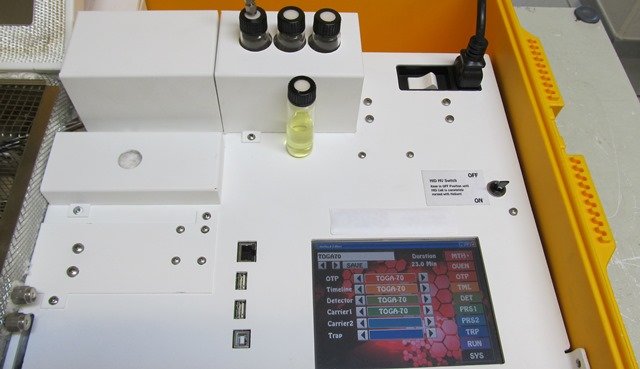Gas-in-Oil-Analysis | TOGA-100-GC
DGA analysis (Dissolved Gas Analysis) remains a top method for DGA diagnosis in transformers and tap changers. This gas in oil analysis allows early fault detection and plays a key role in DGA condition assessment. As transformers insulating oil and insulation materials age, gases in oils dissolve, especially during thermal or electrical faults. Through oil sample analysis, operators can detect early signs of fault development.
Technicians use DGA dissolved gases as indicators to monitor trends over time. They identify unique gas patterns tied to specific faults. Dissolved Gas in Oil Measurement gives crucial insights into the transformer’s condition. The TOGA 100-GC system supports total gas content measurement for mobile, on-site DGA. It delivers quick, accurate results, identifying gaseous decomposition products linked to fault types. The TOGA 100-GC separates all eleven gas components in a single injection, using the ASTM 3612C standard for dissolved gas analysis with headspace injection.
The M-Labor series gas chromatograph supports analysis of dissolved gases in laboratories with an optional automatic sampler. For field applications, the TOGA 100 Portable enables efficient DGA analysis with a small helium tank, making on-site dissolved gas analysers readily available. Each TOGA 100 GC’s column oven offers high sample throughput, with fast heating and cooling to meet heavy analysis demands.
TOGA GC systems are compact, lightweight, and modular. Their design supports easy upgrades and maintenance. These systems apply the ASTM D3612C method for analysis of dissolved gases. Their accuracy and efficiency in DGA diagnosis make them ideal for transformer health monitoring, setting the standard in oil sample analysis and DGA condition assessment.
We offer you advice on the topics: Gas in Oil Analysis | Dissolved Gas Analysis DGA | Transformer oil analysis

